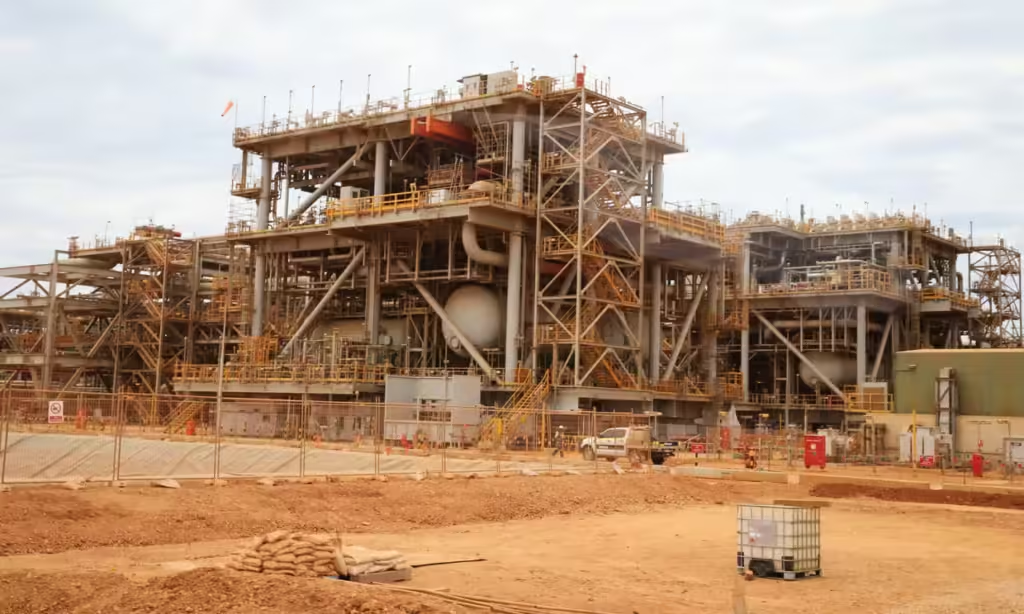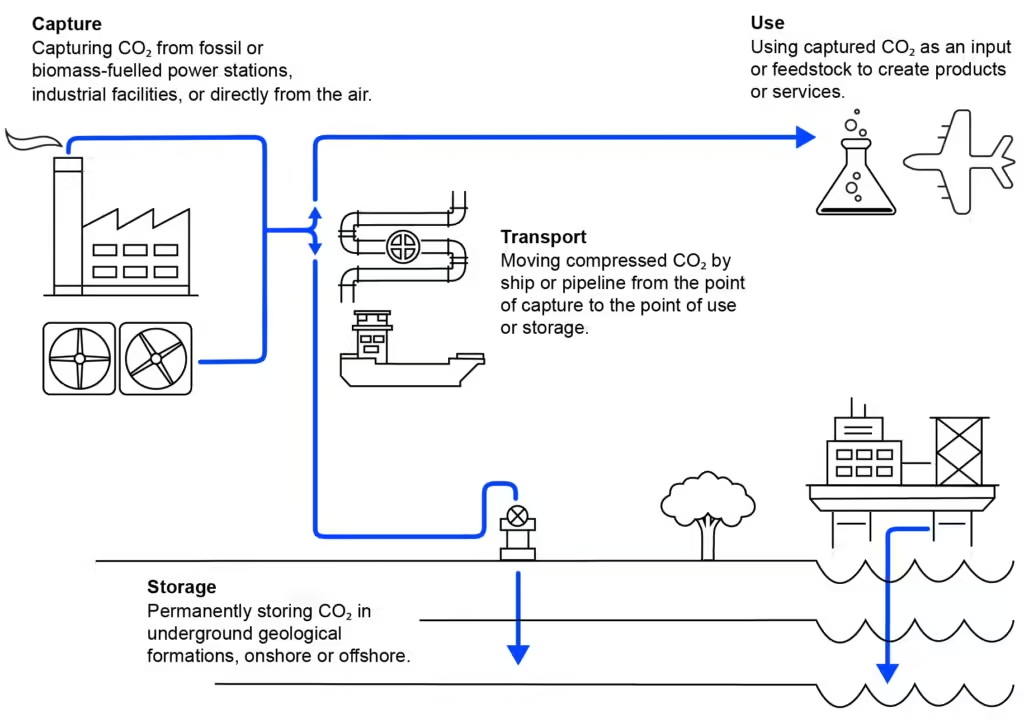Innovative technologies are essential for addressing the pressing need to reduce greenhouse gas (GHG) emissions and promote sustainable practices across various sectors. Among these technologies, Carbon Capture, Utilisation, and Storage (CCUS) has emerged as a vital solution, offering a pathway to mitigate emissions from industrial processes and power generation worldwide.
In this context, Malaysia is actively positioning itself as a potential regional hub for CCUS development, leveraging its substantial geological storage across 16 depleted gas fields. The country aims to establish three CCUS hubs by 2030 as part of its National Energy Transition Roadmap (NETR). While CCUS holds significant promise for both environmental and economic benefits, it also faces numerous challenges that can impact its effectiveness and feasibility. This article will explore both sides of CCUS through case studies of successful and failed projects, highlighting key lessons learned that can inform future efforts.
Table of Contents
Understanding Carbon Capture, Utilisation, and Storage (CCUS)
Carbon Capture, Utilisation, and Storage (CCUS) encompasses a range of technologies aimed at reducing CO2 emissions from major sources like power plants and industrial facilities. The process involves three key stages:
- Capture: This stage separates CO2 from other gases produced during industrial processes, employing methods such as post-combustion, pre-combustion, and oxy-fuel combustion, with post-combustion being the most common.
- Transport: After capture, CO2 is transported to storage or utilisation sites via pipelines, ships, rail, or trucks, depending on the distance and volume involved.
- Storage/Utilisation: The captured CO2 can be stored in geological formations deep underground or utilised in applications like enhanced oil recovery, chemical production, or synthetic fuel creation.
The global landscape for Carbon Capture, Utilisation, and Storage (CCUS) is rapidly evolving as countries work towards net-zero emissions targets. As of 2023, over 700 CCUS projects are in progress worldwide, attracting significant investments. The International Energy Agency (IEA) highlights that nearly two-thirds of emissions reductions from CCUS by 2070 will stem from technologies currently in prototype or demonstration stages, underscoring the need for continuous innovation. The European Union leads in CCUS deployment, having allocated approximately €3.6 billion (around USD 4 billion) for clean technologies.
CCUS is crucial for achieving global net-zero emissions by 2050, particularly in hard-to-abate sectors like cement and steel production, while also enabling low-carbon hydrogen production. However, implementing CCUS is complex, requiring technological expertise, substantial capital for infrastructure development, and meticulous planning. The following section will examine both successful and failed case studies from various countries to identify lessons learned that can enhance the success of future CCUS projects.
Successful CCUS Case Studies
Launched in 1996, the Sleipner project is one of the world’s first commercial-scale CCUS initiatives. It captures approximately 1 million tonnes of CO2 annually from natural gas production and stores it in a saline aquifer beneath the North Sea.
Lessons Learned: The success of Sleipner demonstrates that long-term geological storage is feasible and safe. Effective monitoring systems established at Sleipner can serve as a model for other CCUS initiatives.
This project aims to capture CO2 emissions from a coal-fired power plant and has successfully captured over 1 million tonnes of CO2 since its inception in 2014.
Lessons Learned: Retrofitting existing infrastructure can significantly reduce emissions while maintaining energy production. However, careful planning and investment in technology upgrades are crucial to achieving desired capture rates.
Located in Texas, Petra Nova is one of the largest post-combustion carbon capture projects globally. It captures around 1.6 million tonnes of CO2 annually from a coal-fired power plant and utilises it for enhanced oil recovery.
Lessons Learned: Economic viability is closely linked to market conditions; therefore, diversifying revenue streams through applications like enhanced oil recovery can help sustain CCUS projects during downturns.

Source: Equinor ASA (Photo: Harald Pettersen / Equinor ASA)
Failed CCUS Case Studies
Initially designed as a clean coal project incorporating CCUS technology, Kemper faced significant delays and cost overruns before abandoning its carbon capture plans in 2017.
Lessons Learned: Comprehensive feasibility studies are essential before embarking on large-scale CCUS projects. Understanding technical challenges and potential regulatory hurdles can prevent costly setbacks.
FutureGen 2.0, launched in 2008 as a clean coal project to demonstrate advanced carbon capture technology, faced significant delays due to funding challenges and regulatory uncertainties, ultimately leading to its cancellation in 2017.
Lessons Learned: Securing adequate funding and establishing a clear regulatory framework are critical to the success of CCUS initiatives. Stakeholders must engage with policymakers early in the process to address these issues.
The Gorgon Project, one of the largest CCUS initiatives globally, has encountered technical difficulties that have delayed its full-scale operation since its launch. The project, which aims to capture up to 4 million tonnes of CO2 annually, has struggled with operational efficiency despite significant milestones achieved throughout its development.
Lessons Learned: Continuous technological innovation is necessary for overcoming operational challenges in CCUS projects. Investing in research and development can enhance efficiency and reliability over time.

Source: The Guardian ( Photo: Ray Strange/AAP)
The Feasibility of CCUS in Malaysia
In Malaysia, the potential for CCUS is significant given its reliance on fossil fuels for economic growth. The government aims to establish itself as a regional hub for carbon capture and storage through its National Energy Transition Roadmap (NETR). However, several challenges must be addressed:
- High Capital Costs: The substantial upfront investment required for CCUS technologies poses a barrier to entry for many projects in Malaysia. Innovative financing mechanisms could help mitigate these costs.
- Regulatory Framework Gaps: While Malaysia is moving towards establishing a regulatory framework for CCUS, it currently lacks comprehensive guidelines compared to other countries in the region.
- Technological Readiness: Many CCUS technologies in Malaysia remain in prototype stages, complicating large-scale deployment. Further research and development are needed to improve their efficiency and reliability.
- Infrastructure Development Needs: A robust carbon transport and storage infrastructure is crucial for CCUS success in Malaysia but is currently underdeveloped. Significant investments are necessary in pipelines, storage facilities, and monitoring systems to support effective operations.
Carbon Capture, Utilisation, and Storage (CCUS) offers significant opportunities and challenges on a global scale, as illustrated by various case studies of both successful implementations and failures. The lessons learned from these experiences highlight the importance of thorough planning, innovative financing strategies, robust regulatory frameworks, and ongoing technological advancement. Embracing insights from both successes and failures in CCUS is essential for developing effective strategies that drive meaningful progress towards a low-carbon future.
For Malaysia, leveraging these insights will be crucial as it aims to establish itself as a leader in regional CCUS initiatives. By addressing existing challenges while capitalising on its unique advantages—such as substantial geological storage potential and strong government support—Malaysia can position itself at the forefront of sustainable energy practices within Southeast Asia.
While the path to effective CCUS implementation may seem daunting, starting with a robust greenhouse gas management system will provide a solid foundation for advancements in carbon management technology across the nation.
BBC comprises a team of passionate practitioners implementing solutions for sustainability. Our consultants have extensive knowledge and experience in greenhouse gas emissions management, ESG, and sustainability, helping you solve your problems with innovative, sustainable solutions.
Contact us to help you to prepare for your GHG emissions management.

Events
October 30, 2024 @ 1:15PM to 2:00PM
Malaysia’s Budget 2025: Key Highlights on ESG and Sustainability
Join us for our upcoming Live Ask Me Anything (AMA) session on October 30, 2024, from 1:15 to 2:00 PM MYT. Our team of ESG and Sustainability consultant and trainer, Jia Xin Ng will provide an in-depth analysis of the significant ESG initiatives and tax incentives introduced in this year’s budget and their implications for businesses and the environment.



